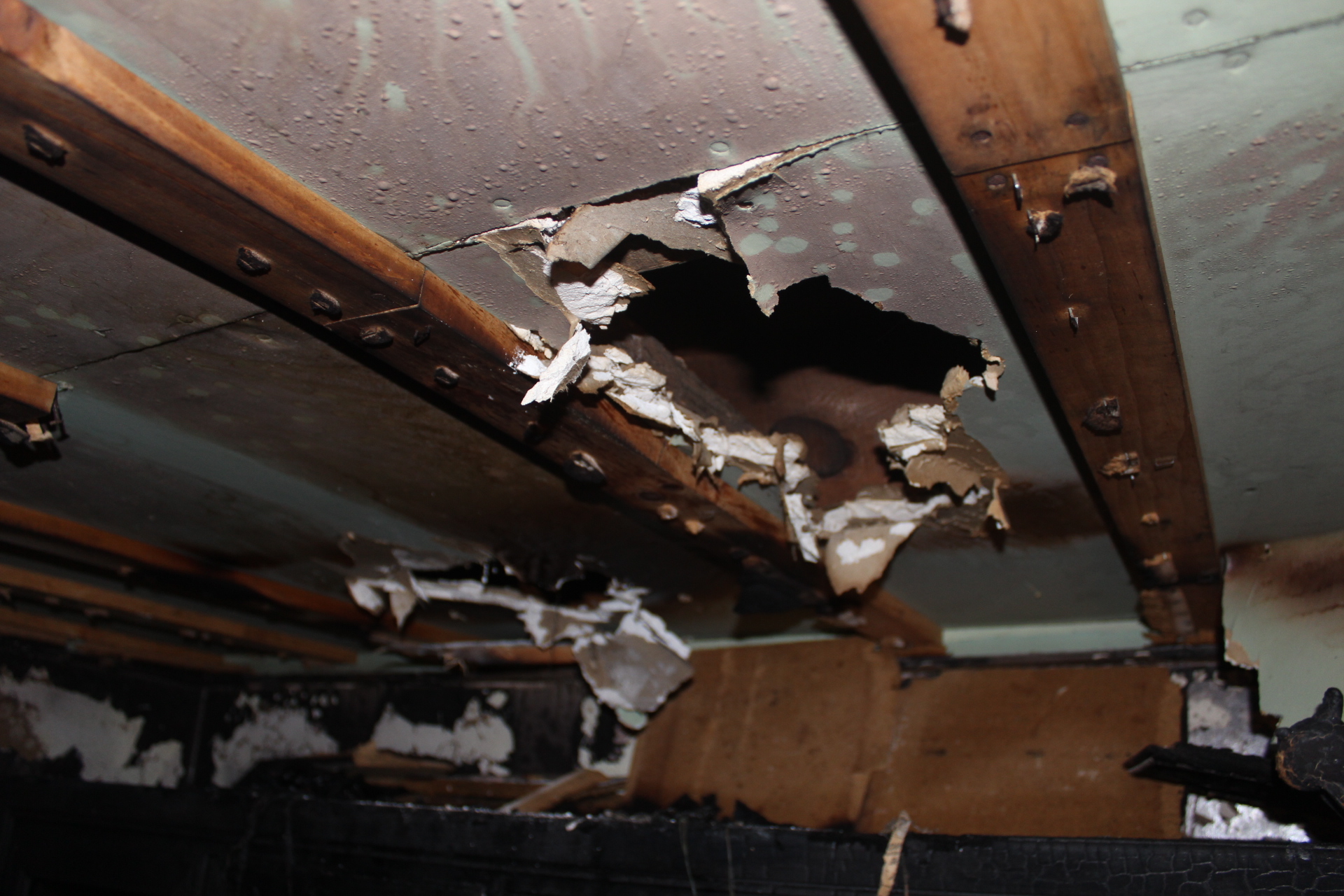
ServiceMaster Restore is a trusted leader in water damage repair, proudly serving the South Bend, Indiana community with comprehensive services to restore homes and businesses affected by water damage. From burst pipes and flooding to major storm damage, our highly trained professionals are available 24/7 to respond to emergencies, providing expert guidance and fast solutions to help restore your property.
When water damage occurs, time is critical to preventing long-term structural damage and hazardous mold growth. That’s why ServiceMaster ensures a rapid response, starting with a thorough assessment of the affected area. Our certified technicians use state-of-the-art equipment, including industrial pumps, wet/dry vacuums, dehumidifiers, and specialized fans, to efficiently extract water, dry out the area, and mitigate the risks of mold development.
In addition to our water extraction services, ServiceMaster Restore handles every aspect of the restoration process, from structural repairs to content recovery. We also have extensive experience working with over 20 of the largest insurance companies in the country, ensuring a smooth claims process to expedite financial assistance. Our team of professionals is dedicated to navigating the complexities of water damage repairs, providing compassionate, expert service to make the process as stress-free as possible.
ServiceMaster Restore is committed to using best-of-class methods that meet or exceed industry standards. As an industry leader, we follow strict protocols set by organizations like the Institute of Inspection, Cleaning and Restoration Certification (IICRC), ensuring that every step of the process is performed with precision and care. Whether it’s addressing the initial damage, mitigating risks, or performing full restoration, our focus is on delivering high-quality, reliable results.
For South Bend residents facing water damage, choosing ServiceMaster Restore means choosing a dedicated partner with the expertise, equipment, and commitment to excellence required to fully restore your property. With our advanced technology, expert techniques, and focus on client care, we help families and businesses recover swiftly, offering peace of mind during difficult times. Let ServiceMaster Restore bring your home or business back to its pre-loss condition with professionalism and care.
We Work With All Insurance Carriers
We are a national vendor for over 20 of the largest insurance companies in the United States. We work directly with your insurance company to help get your claim processed as quickly as possible.
Call Now for Help

Why Water Damage Repair Would Be Needed?
- Floods and Natural Disasters:
Water damage repair is often needed in the aftermath of floods, hurricanes, or other natural disasters that result in excessive water entering homes or buildings.
- Leaking or Burst Pipes:
Plumbing issues, such as leaking or burst pipes, can lead to water damage within walls, ceilings, and floors, necessitating repair to prevent structural damage and mold growth.
- Roof Leaks:
Roof leaks, caused by damaged shingles or flashing, can allow water to infiltrate the interior of a structure, requiring repair to prevent further water damage and structural issues.
- Appliance Malfunctions:
Malfunctions in appliances like washing machines, dishwashers, or water heaters can result in water leaks, requiring repair to mitigate damage to floors, walls, and other affected areas.
- Sewage Backups:
Sewage backups can introduce contaminated water into homes, posing health risks and demanding immediate repair to sanitize the affected areas.
- Poorly Sealed Windows and Doors:
Improperly sealed windows and doors can allow rainwater to enter, leading to water damage that requires repair to prevent structural issues and mold growth.
- Basement Flooding:
Basement flooding, often due to poor drainage, heavy rainfall, or foundation issues, necessitates water damage repair to salvage belongings, prevent mold, and restore the space.
- Condensation and Humidity:
Excessive condensation and high humidity levels, especially in poorly ventilated areas, can result in water damage, requiring repair to prevent mold growth and material deterioration.
- Overflows from Sinks, Tubs, and Toilets:
Overflowing sinks, tubs, or toilets can lead to water damage on floors and in surrounding areas, requiring repair to address the immediate damage and potential secondary issues.
- Structural Issues:
Water damage can compromise the structural integrity of a building, leading to the need for repairs to ensure the stability and safety of the structure.
- Mold Growth Prevention:
Water damage repair is essential to prevent or remediate mold growth, as mold can proliferate in damp environments and pose health risks to occupants.

First Steps When You Need Water Damage Repair
First Steps When You Need Water Damage Repair
- Ensure Safety:
Prioritize safety by avoiding flooded or electrical hazard areas.
- Identify Water Source:
Determine and stop the source of water to prevent further damage.
- Turn Off Electricity:
Safely turn off electricity in affected areas to avoid electrical hazards.
- Document Damage:
Take photos or videos of the damage for insurance purposes.
- Remove Standing Water:
Use towels, buckets, or a wet/dry vacuum to remove standing water.
- Protect Belongings:
Move valuables to a dry area to prevent further damage.
- Open Windows and Ventilate:
Increase ventilation by opening windows and using fans.
- Contact Professionals:
Call water damage repair professionals for assessment and assistance.
- Notify Insurance:
Contact your insurance company to initiate the claims process.
- Prevent Mold Growth:
Act quickly to prevent mold growth by drying out affected areas.
- Avoid DIY Repairs:
Refrain from extensive DIY repairs without professional guidance.
What Not to Do When You Need Water Damage Repair
- Ignore the Issue:
Avoid ignoring water damage; immediate action is crucial to prevent further deterioration.
- Enter Unsafe Areas:
Do not enter flooded areas if there is a risk of electrical hazards or contamination.
- Use Electrical Appliances:
Refrain from using electrical appliances in flooded areas to prevent electric shock.
- Delay Turning Off Electricity:
Do not postpone turning off electricity in affected areas; prompt action is essential.
- Neglect Protective Gear:
If entering flooded areas, avoid doing so without proper protective gear, such as rubber boots and gloves.
- Use Household Appliances for Water Removal:
Avoid using regular household appliances for water removal; specialized equipment is more effective.
- Leave Wet Items in Place:
Do not leave wet items like carpets or furniture in place for an extended period; move them to a dry area promptly.
- Delay Professional Assistance:
Waiting too long to seek professional help can exacerbate damage; prompt professional assistance is crucial.
- Forget to Document the Damage:
Do not neglect to take photos or videos for insurance purposes; documentation is vital for the claims process.
- Neglect Hidden Areas:
When addressing water damage, do not overlook hidden or hard-to-reach areas; professionals can identify and address all affected areas.
- Use Bleach Without Guidance:
Refrain from using bleach without professional guidance for cleaning or disinfecting water-damaged areas.
- Delay Contacting Your Insurance Company:
Do not postpone notifying your insurance company; prompt contact facilitates a smoother claims process.
- Overlook Mold Prevention:
Act quickly to prevent mold growth; overlooking this can lead to health hazards and further damage.
![]()
What is Water Damage Repair?
Water damage repair is the process of restoring structures, belongings, and areas affected by water intrusion to their pre-damaged condition. It involves a series of comprehensive steps aimed at mitigating damage, preventing further deterioration, and restoring a property to a safe and habitable state.
The primary goal of water damage repair is to address the immediate and long-term consequences of water damage, which can result from various sources such as floods, leaks, burst pipes, sewage backups, or natural disasters. The repair process typically includes the following key steps:
- Assessment:
- Professionals assess the extent of the water damage, categorize it based on its source and contamination level, and develop a tailored repair plan.
- Water Extraction:
- Standing water is removed using specialized equipment such as pumps and wet/dry vacuums to prevent further damage and facilitate the drying process.
- Drying and Dehumidification:
- Industrial fans and dehumidifiers are employed to dry out affected areas and restore optimal humidity levels, preventing mold growth and structural issues.
- Structural Repairs:
- Damaged building materials, such as drywall, insulation, and flooring, are repaired or replaced to restore the structural integrity of the property.
- Mold Remediation:
- If necessary, professionals address potential mold growth by using antimicrobial treatments and ensuring thorough cleaning of affected areas.
- Content Restoration:
- Belongings affected by water damage are assessed, cleaned, and restored to the extent possible, salvaging items like furniture, documents, and personal belongings.
- Insurance Coordination:
- Professionals often work closely with insurance companies, facilitating the claims process and ensuring that homeowners receive the coverage needed for repairs.
- Preventive Measures:
- Measures are taken to prevent future water damage, such as improving drainage, repairing leaks, and enhancing the overall resilience of the property.
Water damage repair is a specialized field that requires expertise and the use of advanced equipment. Professional restoration services, like those offered by companies such as ServiceMaster Restore, play a crucial role in efficiently and effectively restoring properties affected by water damage. Timely and thorough repair efforts are essential to minimize the impact on a home or business and ensure a safe and healthy environment for occupants.

